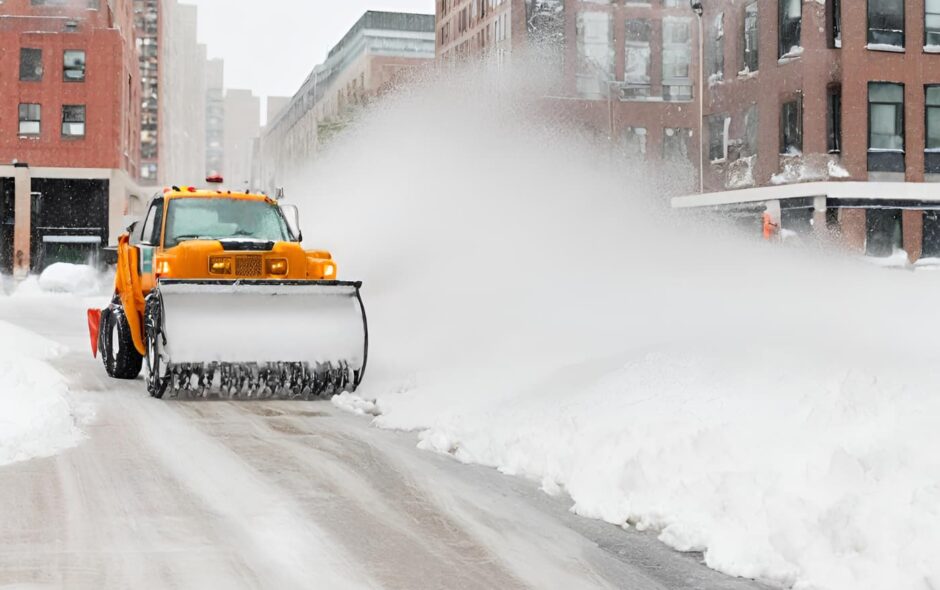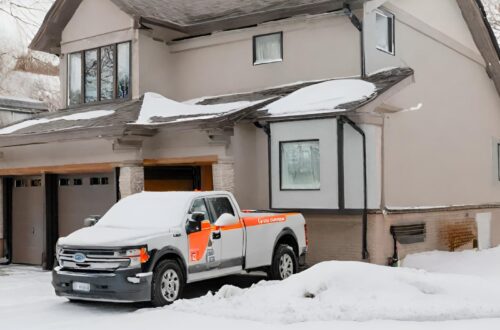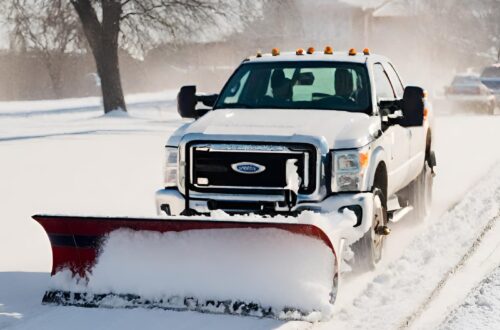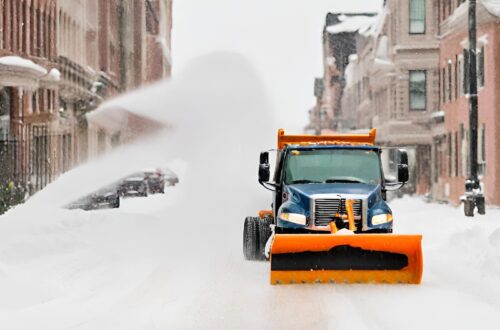Snow removal is a crucial winter service for businesses, ensuring safe and accessible properties during snowy and icy conditions. While many businesses focus on the upfront expenses of snow removal, such as the average cost of snow removal, there are often hidden costs that can significantly impact the overall budget. In this blog post, we’ll explore these hidden costs and discuss what your business should consider when planning for snow removal.
Fuel and Maintenance Costs
One of the hidden costs of snow removal lies in fuel and maintenance expenses. Snow removal equipment, such as plows and snow blowers, require fuel to operate efficiently. During a harsh winter, fuel costs can escalate, affecting your budget. Additionally, regular maintenance is essential to keep equipment running smoothly. Neglecting maintenance can lead to costly repairs and downtime, impacting your snow removal operations.
To manage these costs effectively, businesses should invest in fuel-efficient equipment, schedule regular maintenance, and consider the use of eco-friendly equipment and practices to reduce fuel consumption.
Labor Costs and Overtime
Labor costs are a significant component of snow removal expenses. While it’s essential to have a dedicated team for snow removal, unexpected overtime expenses can arise during heavy snowfall or emergencies. Overtime pay, including holiday pay, can strain your budget if not planned for in advance.
To mitigate these costs, businesses should develop efficient labor management strategies, including proper shift scheduling and contingency plans for emergencies. Effective communication with your snow removal team can help avoid unnecessary overtime expenses.
Salt and Deicing Material Expenses
Salt and deicing materials are essential for maintaining safe pathways and parking areas during winter. However, the type and amount of materials used can impact your snow removal costs. In addition, environmental concerns related to excessive salt usage may result in compliance costs.
To manage these costs, consider using alternative deicing materials that are more cost-effective and environmentally friendly. Properly calibrating equipment for material application can help minimize waste and costs.
Emergency Services and After-Hours Calls
Winter weather can be unpredictable, leading to unexpected emergencies that require immediate attention. These emergencies can include severe snowstorms, equipment breakdowns, or sudden property damage. Emergency services often come at a premium, and after-hours calls can be more expensive.
Budgeting for emergencies and having a contingency plan in place is crucial. Establishing a relationship with a reliable snow removal contractor for emergency situations can help reduce costs in the long run.
Insurance and Liability Considerations
Insurance costs and liability considerations are often overlooked hidden costs of snow removal. Businesses must have adequate insurance coverage to protect against property damage, accidents, and legal claims. Inadequate coverage or liability disputes can result in unexpected expenses.
Investing in comprehensive insurance coverage and implementing risk mitigation measures can help minimize these hidden costs. Regularly reviewing insurance policies and seeking legal advice when necessary can also prevent financial surprises.
Property Damage and Repairs
Despite the best efforts of snow removal crews, property damage can occur during the snow removal process. Damage to landscaping, curbs, or structures can lead to repair costs that businesses might not anticipate. Ignoring necessary repairs can further increase expenses over time.
Businesses should proactively address property damage, promptly addressing necessary repairs to prevent larger, costlier issues in the future. Proper training and communication with snow removal crews can help reduce the likelihood of damage.
Environmental Compliance Costs
In addition to fuel and maintenance, labor, and materials expenses, businesses must also consider the implications of commercial snow and ice management on their budgets.
To address these costs, businesses should stay informed about local environmental regulations, adopt environmentally responsible snow and ice management practices, and factor compliance costs into their budgets.
Storage and Equipment Costs
Storing snow removal equipment and maintaining it during the off-season can also be a hidden cost. Storage facilities, equipment upkeep, and the occasional need to replace aging equipment can add to the overall expenses.
Businesses should budget for equipment storage and maintenance costs while considering the long-term benefits of investing in reliable, high-quality equipment that requires less frequent replacement.
Snow Removal Contractor Fees
While hiring snow removal contractors can provide professional expertise and peace of mind, their fees can sometimes be overlooked in the budgeting process. These fees can vary widely based on the scope of services and the terms of the contract.
To manage contractor fees effectively, businesses should thoroughly evaluate potential contractors, negotiate favorable contract terms, and ensure that the agreed-upon services align with their budget and needs.
Conclusion
Understanding and accounting for hidden costs in snow removal is essential for effective budgeting and financial planning. By considering fuel and maintenance, labor, materials, emergencies, insurance, property damage, environmental compliance, equipment, and contractor fees, businesses can make more informed decisions and ensure a smooth and cost-effective snow removal process.
By addressing these hidden costs and implementing cost-saving measures where possible, businesses can navigate the challenges of winter weather while maintaining financial stability and operational efficiency. Effective snow and ice management, combined with prudent financial planning, will ultimately lead to safer and more cost-effective winter seasons for businesses of all sizes.




